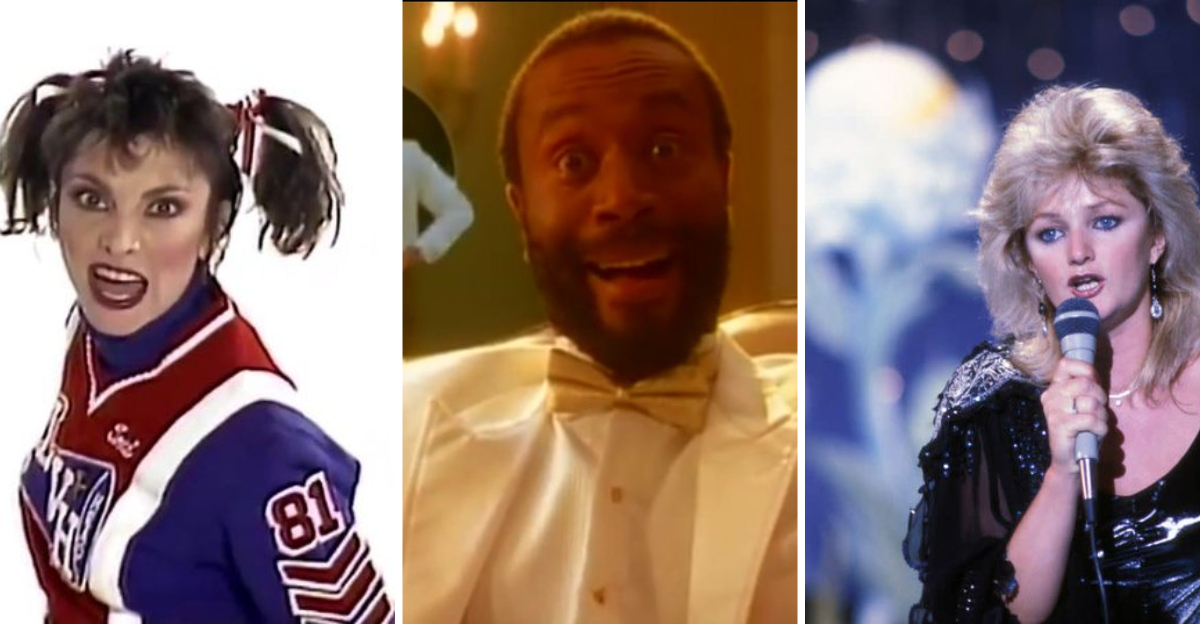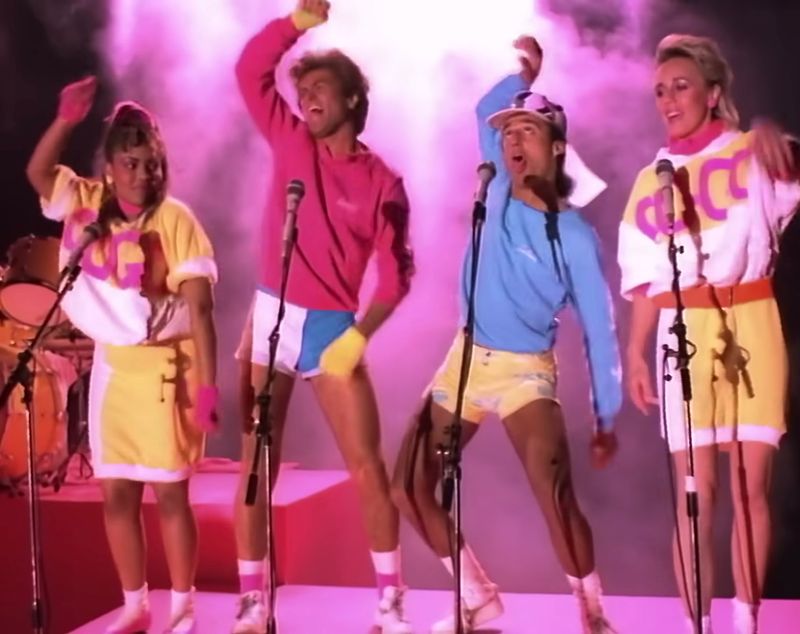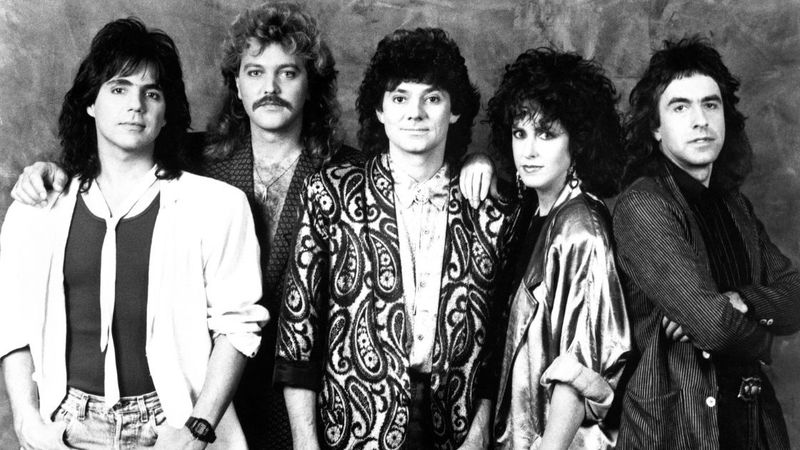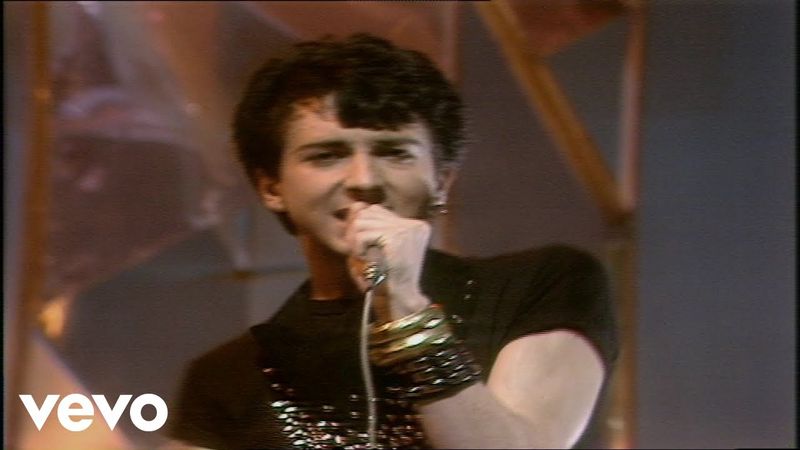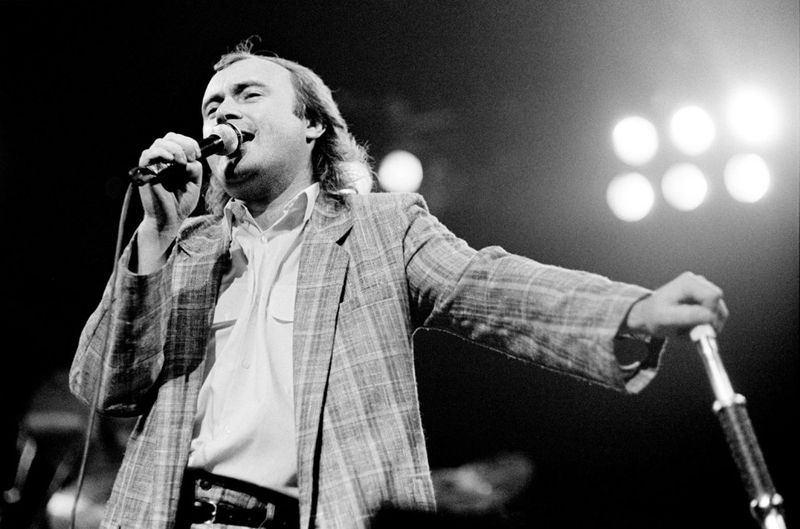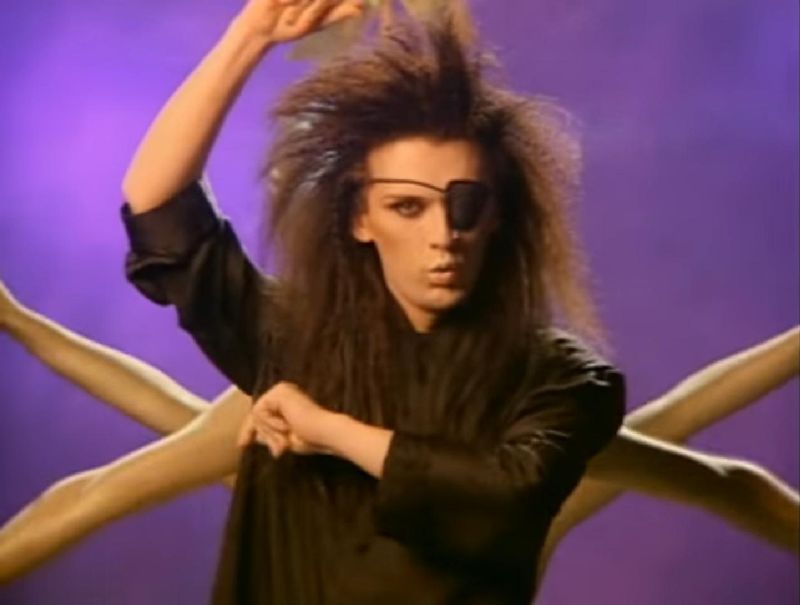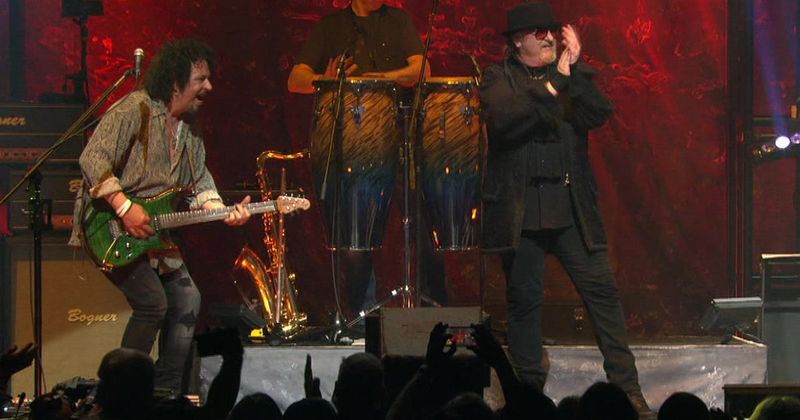The 1980s brought us big hair, neon colors, and songs that played so often we could recite them in our sleep. Radio stations fell in love with certain tracks, putting them on repeat until listeners couldn’t take it anymore. These songs weren’t bad – in fact, most were incredible hits – but hearing them fifteen times a day made even the biggest fans reach for the dial.
1. “Wake Me Up Before You Go-Go” – Wham! (1984)
George Michael’s cheerful vocals and that bouncy melody turned this Wham! hit into a monster success that simply wouldn’t go away. The song topped charts worldwide with its upbeat energy and catchy chorus. Radio programmers couldn’t resist its peppy appeal, playing it multiple times per hour until listeners could sing every word in their sleep. Even today, those first few notes trigger immediate recognition – and sometimes an instinctive reach for the volume knob. Fun fact: The title came from a note Michael’s bandmate Andrew Ridgeley left for his parents, accidentally writing “go” twice.
2. “Every Breath You Take” – The Police (1983)
Mistaken by many as a love song, Sting’s ode to obsession and surveillance became The Police’s signature hit. Its hypnotic guitar line and steady drumbeat created an atmospheric backdrop that radio stations couldn’t resist. The track’s constant airplay transformed it from haunting masterpiece to unavoidable earworm. DJs played it morning, noon, and night until listeners knew every nuance of Sting’s vocals. The song’s staying power proved remarkable – decades later, it still appears in films, TV shows, and cover versions, continuing its reign as one of music’s most recognized melodies despite (or because of) its overexposure.
3. “Mickey” – Toni Basil (1981)
Cheerleader chants and a relentless beat made this novelty hit impossible to ignore. Toni Basil’s energetic performance, complete with cheerleader outfit in the video, captivated MTV viewers while radio stations played the track into the ground. The repetitive chorus of “Oh Mickey, you’re so fine” burrowed into listeners’ brains with alarming efficiency. Originally recorded as “Kitty” by UK group Racey, Basil’s version became the definitive earworm that followed ’80s kids everywhere. Remarkably, Basil was 38 years old when she recorded this youthful anthem – proving age is just a number when creating one of the decade’s most unavoidable hits.
4. “We Built This City” – Starship (1985)
Corporate rock doesn’t get more corporate than this synthesizer-heavy anthem about… rock and roll rebellion? The irony wasn’t lost on critics who watched Starship (formerly the counterculture band Jefferson Airplane) deliver this overproduced track. Radio programmers adored its slick production and catchy chorus, putting it in heavy rotation despite lyrics that made little sense. The song became inescapable – blaring from car radios, department stores, and every Top 40 station across America. Despite later being voted “worst song of the 1980s” by several music publications, its chorus remains instantly recognizable to anyone who lived through the era.
5. “I Just Called to Say I Love You” – Stevie Wonder (1984)
Even musical genius Stevie Wonder couldn’t escape creating a song that would eventually test listeners’ patience through overexposure. This saccharine ballad dominated adult contemporary stations with its simple melody and straightforward sentiment. Wonder wrote and performed every instrument on the track, which won both an Academy Award and a Golden Globe. Its universal message made it perfect for Valentine’s Day, Mother’s Day, and every other occasion requiring a sentimental soundtrack. The song’s ubiquity eventually diminished its emotional impact. Radio stations played it so frequently that what began as sweet turned cloying, making it the musical equivalent of eating an entire cake in one sitting.
6. “Karma Chameleon” – Culture Club (1983)
Boy George’s distinctive vocals and that infectious harmonica hook created an unstoppable hit that conquered radio playlists worldwide. The colorful video, featuring George’s androgynous style and unique fashion sense, made it an MTV staple as well. Radio stations couldn’t get enough of the song’s tropical rhythm and singalong chorus. Its message about fickle relationships resonated with listeners – at least until they heard it for the thousandth time. The track became Culture Club’s biggest hit, spending three weeks at #1 in America and six weeks in the UK. Its success cemented the band’s place in pop culture, though many fans eventually needed a break from its relentless cheerfulness.
7. “Come On Eileen” – Dexys Midnight Runners (1982)
Those overalls, that fiddle, and a tempo that speeds up mid-song created an irresistible one-hit wonder that radio couldn’t stop playing. The song’s Celtic-influenced sound stood out among synthesizer-heavy competitors, making it both distinctive and eventually exhausting. Kevin Rowland’s passionate vocals telling the tale of youthful romance connected with listeners worldwide. Radio programmers fell in love with its unique structure and crowd-pleasing chorus, ensuring it received maximum airplay. The track’s unusual arrangement, shifting from mid-tempo to frantic by the finale, made it perfect for parties but increasingly tiresome on the fifteenth daily radio play. Still, those opening notes never fail to provoke recognition from ’80s kids.
8. “Total Eclipse of the Heart” – Bonnie Tyler (1983)
Dramatic key changes, power notes, and gothic imagery made this Jim Steinman-produced epic an ’80s power ballad for the ages. Bonnie Tyler’s raspy vocals delivered emotional lines about love and longing with theatrical intensity that captivated listeners. At nearly seven minutes in its full version, the song’s operatic structure and bombastic production made it perfect for late-night dedications. Radio stations couldn’t resist its emotional pull, playing it multiple times daily despite its considerable length. The bizarre music video featuring glowing-eyed schoolboys added to the song’s mystique. Eventually, though, even devoted fans grew weary of the track’s emotional rollercoaster after hearing it on repeat for months.
9. “Don’t Stop Believin'” – Journey (1981)
That opening piano riff signals the arrival of an anthem that refused to fade away. Steve Perry’s soaring vocals and the song’s uplifting message created a perfect storm of ’80s rock excess that dominated airwaves. The track’s unusual structure – saving the chorus until the end – didn’t stop it from becoming a radio programmer’s dream. Its story of small-town dreamers resonated with listeners everywhere, though its constant presence eventually tested that goodwill. Remarkably, the song found renewed popularity decades later through TV shows like “Glee” and “The Sopranos,” subjecting a new generation to its unavoidable chorus. Some hits never truly die – they just find new mediums to haunt.
10. “Tainted Love” – Soft Cell (1981)
Marc Almond’s passionate vocals and that iconic synthesizer riff transformed this Northern Soul obscurity into a new wave classic that wouldn’t leave the airwaves. Soft Cell’s cover version of Gloria Jones’ 1964 track became the definitive version for most listeners. The song’s minimalist production and emotional delivery created an instant hook that radio stations played relentlessly. Its tale of toxic romance resonated with listeners, though its constant presence eventually became a relationship many wanted to escape. The extended version, which segued into “Where Did Our Love Go,” gave DJs nearly 10 minutes of material to fill airtime. By 1982, many fans had heard enough to last several lifetimes.
11. “Sussudio” – Phil Collins (1985)
Nobody knew what “Sussudio” meant – not even Phil Collins, who admitted he made up the word as a placeholder. That didn’t stop this Prince-influenced dance track from dominating radio with its horn section and catchy nonsense chorus. Collins’ star power in the mid-80s ensured maximum airplay for everything he released. This track’s upbeat tempo and memorable hook made it particularly attractive to programmers looking to energize their playlists. Critics noted its similarity to Prince’s “1999,” but listeners didn’t seem to mind – at least initially. Eventually, the repetitive nature of both the song itself and its constant airplay created a perfect storm of ’80s overexposure.
12. “You Spin Me Round (Like a Record)” – Dead or Alive (1984)
Pete Burns’ distinctive vocals and producer Stock Aitken Waterman’s hi-NRG production created a dance floor sensation that radio stations couldn’t resist. The song’s relentless beat and hypnotic chorus made it perfect for both clubs and radio playlists. Burns’ androgynous appearance and the song’s suggestive lyrics added to its provocative appeal. The track became Dead or Alive’s signature hit, though its constant airplay eventually diluted its initial excitement. The song experienced a revival in the 2000s through samples and movie appearances, subjecting a new generation to its circular chorus. Few ’80s dance tracks remain as instantly recognizable – for better or worse.
13. “Relax” – Frankie Goes to Hollywood (1983)
Initially banned by the BBC for its suggestive lyrics, this provocative dance track ultimately couldn’t be contained. Producer Trevor Horn’s slick production and the band’s controversial image created a perfect storm of publicity that drove the song up the charts. The track’s thumping beat and sexually charged vocals made it a club favorite. Once radio stations outside the UK embraced it, the song became inescapable despite – or perhaps because of – its risqué content. The various remixes and extended versions gave DJs plenty of material to work with. By the time the controversy faded, many listeners had heard enough of the command to “relax” to last a lifetime.
14. “Kokomo” – The Beach Boys (1988)
Arriving late in the decade, this tropical-themed comeback hit proved The Beach Boys could still create an earworm – much to radio listeners’ eventual dismay. The song’s fictional paradise and breezy melody made it perfect for constant summer airplay. Written for the “Cocktail” soundtrack, the track reached #1 without founding member Brian Wilson’s involvement. Its steel drums and island vibes created an instant mental vacation that radio programmers couldn’t resist playing again and again. The repetitive chorus listing Caribbean destinations became both the song’s signature and its most tiresome element. By summer’s end, many listeners were ready to ban the Beach Boys from their personal playlists.
15. “True” – Spandau Ballet (1983)
Tony Hadley’s rich baritone and that smooth saxophone solo created the ultimate ’80s romantic moment – until overplay rendered it almost comical. The song’s sincere lyrics about songwriter Gary Kemp’s unrequited love became the slow-dance anthem of the decade. Radio stations embraced its sophisticated sound and emotional delivery, placing it in heavy rotation on adult contemporary formats. Its association with romantic moments made it a staple of dedication shows and love song compilations. The track’s use in countless films and TV shows ensured its place in pop culture. However, its ubiquity eventually transformed a genuinely moving ballad into a clichéd representation of ’80s excess.
16. “Don’t Worry, Be Happy” – Bobby McFerrin (1988)
Created entirely with vocal sounds and body percussion, this a cappella novelty hit showcased Bobby McFerrin’s remarkable talent – before becoming the musical equivalent of an annoying bumper sticker. The song’s carefree message and whistled hook initially charmed listeners worldwide. The track’s unprecedented success made it the first a cappella song to reach #1 on the Billboard Hot 100. Its simple, positive message and McFerrin’s vocal gymnastics made it irresistible to radio programmers seeking upbeat content. However, the song’s constant presence and repetitive chorus eventually undermined its cheerful message. Many found that hearing “don’t worry, be happy” fifteen times a day had the opposite of the intended effect.
17. “Africa” – Toto (1982)
Atmospheric synthesizers and poetic lyrics about the African continent created a unique soft rock masterpiece that radio couldn’t stop playing. The song’s percussion and chorus proved hypnotically catchy, ensuring its place in rotation for years. Band members later admitted they’d never visited Africa before writing the song, which explains its romanticized, somewhat vague descriptions. This didn’t stop it from becoming Toto’s signature hit, played constantly across multiple radio formats. The track experienced an unlikely revival decades later through internet memes and cover versions. This renaissance subjected a new generation to its unforgettable chorus about blessing the rains, proving some overplayed songs never truly disappear.
